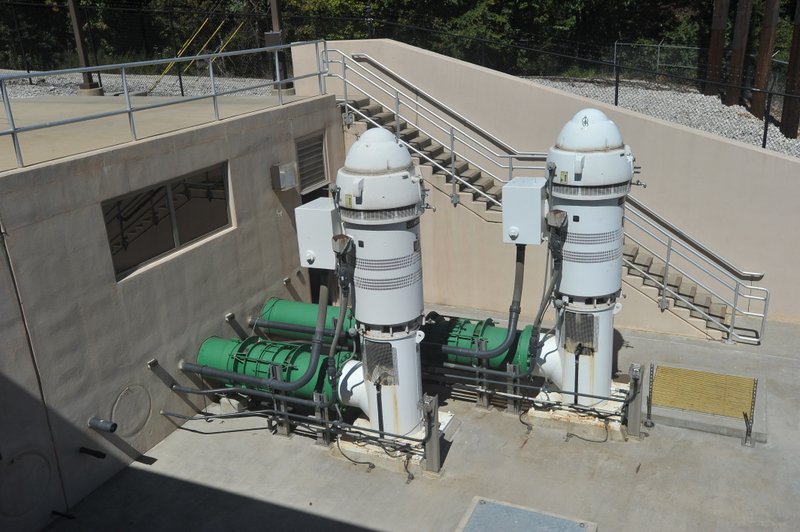LOWELL -- The next major expansion at Beaver Water District is likely to happen in 2031, according to the preliminary update to the district's master plan.
The district, as a water treatment wholesaler, provides water to Bentonville, Fayetteville, Springdale and Rogers, and the cities provide water to individual residences, businesses and some outlying cities.
Regional Water
Beaver Water District serves more than 300,000 people in Bentonville, Fayetteville, Rogers, Springdale and surrounding communities.
Source: Staff report
Beaver Water District has been ahead of the curve, said Alan Fortenberry, chief executive officer.
"That's the position we want to stay in. We don't want to be lagging," Fortenberry said, noting customers wouldn't be happy if they turn the tap and the water doesn't come out.
District board members heard Thursday from Andrew Hansen, project manager with engineering firm Black & Veatch.
A new line and pumps drawing from Beaver Lake, a 40-million-gallon-per-day water treatment plant expansion, storage expansion and expansion for water treatment byproducts could cost $76.5 million in 2015 dollars. A western corridor expansion that will take water to a central location near Willis Shaw Elementary School in Springdale would cost $74 million. Replacement pumps slated for as early as 2022 to keep the system flowing until 2030 improvements were priced at $4.4 million.
That represents planned efforts, Fortenberry said
The timeline is an estimate, Hansen said, but the update to costs and needs allows for financial planning.
The "rubber hits the road" plan will be the 2025 update, he said.
The tipping point for expansion of water treatment facilities is when the peak demand on the system reaches 140 million gallons of water per day. That could be in 2030, according to the Black & Veatch report. However, the area may get to 2040 without ever reaching that water demand, according to the report.
Average daily production during 2015 was about 50 million gallons of water per day and peak production was 99 million gallons per day, according to the report.
The two factors that will predict how much water the district will need in the future are how much water the average consumer uses and population growth, Hansen said.
Water use has declined since the 1990s, he said. The average for Beaver Water District consumers, including businesses, is 150 gallons of water per day, down from 220 gallons in the 1990s.
"A majority of that decline has been more efficient water use," Hansen said.
Population growth has been estimated at 2.8 percent in Northwest Arkansas and 1.7 percent in the state, Hansen said
The 2005 plan was much more aggressive in its growth estimate, predicting the expansions now slated for 2031 in 2021.
Census data shows the region's population increased by about 25 people per day between April 2010 and July 2014, said Rob Smith, communication and policy director for the Northwest Arkansas Council.
In the 10 years between 1990 and 2000, the region was growing by about 30 people per day, Smith said.
The 2005 plan called for peak use in Bentonville to hit 20 million gallons of water per day; currently its maximum demand is 17 million.
By 2005, projections said Fayetteville was supposed to need 39 million gallons of water per day by 2015. Actual peak use was 30 million gallons of water per day in 2015, according to the report.
Rogers was supposed to have a peak need of 23 million gallons of water per day by 2015, based on 2005 projections. Rogers' peak use this year was 19 million gallons of water per day, according to the 2015 report.
Springdale was projected to need 34 million gallons of water per day by 2015 in the 2005 report, but currently peaks at 30 million gallons of water per day.
Timing is key in any expansion, Fortenberry told the board. Western expansion could come sooner, depending on customer needs.
Another factor could be federal changes to water quality guidelines, changes in treatment methods or a decrease in lake clarity that prompts a change in water treatment. The plan includes a $55 million estimate for potential water quality improvements.
"If our efforts in source water protection is not successful we may be pushed into that," Fortenberry said of water quality improvements.
NW News on 11/21/2015

